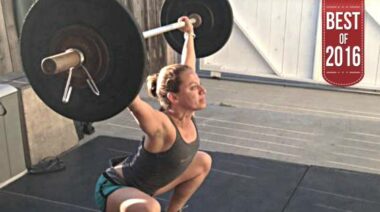I’ve been in the strength and conditioning field for over 30 years. I’ve trained thousands of athletes and clients. The list includes male and female high school, collegiate, and professional athletes, along with non-athlete guys and gals seeking to improve their fitness.
Whatever their goal, my approach to progression has followed the same formula:
- Stimulate their muscular and/or cardiovascular systems with effective overload.
- Allow time for healing/adaptation to those imposed stresses.
- Apply greater stimulation in the forthcoming training sessions.
That is how basic exercise principles have worked since day one in the name of progressive training: overload, recovery and adaptation, then progression (greater overload) and repeat accordingly.
However, I have noticed in the past few years that many prescribed training programs have no progressive plan over time and simply prescribe exercise routines randomly. Here are some examples:
- Three sets of ten repetitions in some type of strength training with no established resistance progression.
- Six repetitions of an interval run with no regard to the intensity of each run and measurement of recovery time between them.
- Circuit training variables are not altered. That is, some use the same exercises, rounds, work time, and recovery times with no variation (i.e., three rounds of eight exercises with 1:00 work time and :25 recovery time between exercises.)
This type of planning may show results in the short term, but there should be some clear plan for long-term development. Here are some specific examples of three clear progressions.
You must continually challenge your systems. [Photo courtesy of Cara Kobernik]
Progression 1: Interval Training
Initial overload prescription:
Run five x 400 meters in 1:15.
Recovery/Adaptation:
- Rest 3:45 between each run.
- Rest 48 to 72 hours between sessions.
New overload prescription:
- Run five x 400 meters in 1:05.
Recovery/Adaptation:
- Rest 3:30 between each run.
- Rest 48 to 72 hours between sessions.
New overload prescription:
- Run six x 400 meters in 1:00.
Recovery/Adaptation:
- Rest 3:15 between each run.
- Rest 48 to 72 hours between sessions.
New overload prescription:
- Run eight x 400 meters in 1:00.
To assure progression in interval conditioning, have a plan that increases training intensity (speed), increases volume (number of runs/distance), and/or lessen the recovery time between bouts.
Progression 2: Strength Training
Initial overload prescription:
Lift 200 pounds for maximum repetitions over two sets (i.e., 15 and 12 repetitions to muscular fatigue in each set, respectively).
Recovery/Adaptation:
- Rest 2:00 between each set.
- Rest 48 to 72 hours between sessions.
New overload prescription:
- Lift 200 pounds for maximum repetitions over three sets (i.e., 17, 14, and 12 repetitions to muscular fatigue in each set, respectively).
Recovery/Adaptation:
- Rest 2:00 between each set.
- Rest 48 to 72 hours between sessions.
New overload prescription:
- Lift 215 pounds for maximum repetitions over two sets (i.e., 16 and 14 repetitions to muscular fatigue in each set, respectively).
Recovery/Adaptation:
- Rest 2:00 between each set.
- Rest 48 to 72 hours between sessions.
New overload prescription:
- Lift 215 pounds for maximum repetitions over three sets (i.e., 16, 14, and 13 repetitions to muscular fatigue in each set, respectively).
Recovery/Adaptation:
- Rest 2:00 between each set.
- Rest 48 to 72 hours between sessions.
New overload prescription:
- Lift 225 pounds for maximum repetitions over three sets (i.e., 14, 12, and 11 repetitions to muscular fatigue in each set, respectively).
Recovery/Adaptation:
- Rest 2:00 between each set.
- Rest 48 to 72 hours between sessions.
New overload prescription:
- Lift 225 pounds for maximum repetitions over three sets (i.e., 15, 13, and 12 repetitions to muscular fatigue in each set, respectively).
You get the idea. Progress in terms of greater resistance used, more repetitions performed, and/or more sets completed (within reason).
Progression 3: Circuit Training
Initial overload prescription:
- Three rounds of seven exercises with :45 work time and :30 recovery time (3 x 7 @ :45 on/:30 off).
Recovery/Adaptation:
- Rest 24 to 48 hours between sessions.
New overload prescription:
- 3 x 7 @ 1:00 on/:25 off.
Recovery/Adaptation:
- Rest 24 to 48 hours between sessions.
New overload prescription:
- 3 x 10 @ :55 on/:25 off.
Recovery/Adaptation:
- Rest 24 to 48 hours between sessions.
New overload prescription:
- 3 x 10 @ 1:00 on/:20 off.
Vary your circuit training similar to interval conditioning. A combination of more volume (rounds and exercises), increased work time, and/or less recovery time between exercises.
The Basic Model Must Be Present
The overload-recovery-adaptation-progression sequence represents the basic model for designing any training program that seeks measurable results. Whatever your training goals, this basic concept must be present to continually challenge your systems as your body adapts to the properly-applied exercises stresses.
More on training approaches:






